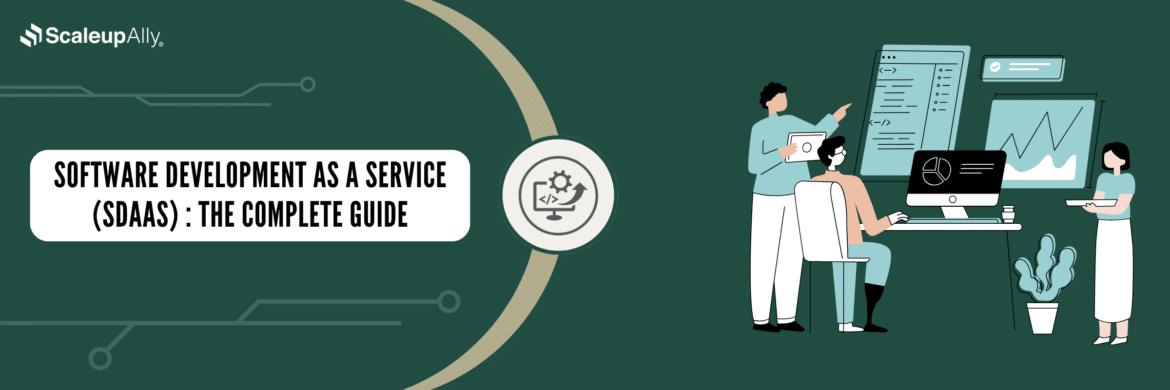
How long does it take to develop an app in 2025?
Manu Jain | October 28, 2023 , 13 min read
Table Of Content
Are you curious about the time it takes to develop an app in 2025?
In this article, we will delve into the intricacies of mobile app development timelines, providing you with valuable insights to help you plan and execute your app development projects effectively. Stay tuned as we demystify the process and shed light on the key factors that determine the time it takes to bring your app idea to life.
Factors Affecting Mobile App Development Time
Several factors can impact the time required to build an app. Understanding these factors will help you plan and estimate the timeline for your app development project. Here are the key factors to consider:
1. Complexity of the App
The complexity of an app refers to the level of technical intricacy and sophistication involved in its development. Apps that have simple functionalities and require basic features tend to take less time to develop compared to apps that are more complex and require advanced features.
When an app is complex, it usually means that it needs to integrate with multiple systems, databases, or third-party services. This requires additional time and effort to ensure seamless integration and functionality. Complex apps may also involve intricate user interfaces or advanced functionalities that require extensive coding and testing.
2. Platform Selection
Developing an app for a single platform, such as iOS or Android, may take less time compared to developing an app that needs to be compatible with multiple platforms. This is because different platforms have different coding languages and frameworks, which means that developers need to write separate code for each platform.
This can significantly increase the development time. Developing for both platforms simultaneously will take longer than focusing on a single platform. Consider your target audience and market share when deciding which platform to prioritise.
3. Features and Functionality
When it comes to mobile app development, one of the key factors that affects the overall time it takes to develop an app is the features and functionality that need to be implemented. The more complex and advanced the features are, the longer it will take to develop the app.
This is because each feature requires careful planning, designing, coding, and testing.
For example, if an app needs to have a payment gateway integration, it will require additional time to set up the infrastructure, implement the necessary security measures, and ensure that all transactions are processed correctly.
Similarly, if the app needs to have social media sharing functionality, it will require integration with various social media platforms and the implementation of features like sharing buttons and posting capabilities.
Furthermore, the number of features and the level of complexity also play a significant role in determining the development time. If an app needs to have multiple complex features, it will require more time to develop compared to an app with a few simple features. Each feature may require additional coding, testing, and bug fixing, which can add to the overall development time.
4. Design and User Experience
Design and user experience are two crucial factors that significantly impact the development time of a mobile app, particularly when it comes to iOS app development. The design of an app encompasses its visual elements, layout, and overall aesthetic appeal. A well-designed app not only attracts users but also enhances their overall experience.
On the other hand, user experience focuses on how users interact with the app and how intuitive and seamless their experience is throughout the app. Both design and user experience play a pivotal role in the success of a mobile app, and they require careful consideration and planning during the development process.
5. Development Team
Firstly, the experience and skill level of the development team members can greatly affect the speed of app development. A team with extensive experience in app development will be familiar with the platform’s guidelines and best practices, allowing them to quickly navigate through the development process.
On the other hand, a less experienced team may require more time to learn and adapt to the intricacies of iOS development, which can potentially lead to delays.
Moreover, the size and composition of the development team can also impact the app development time. A larger team with specialised roles can often work in parallel, speeding up the development process.
For example, having dedicated designers, developers, and testers can ensure that each aspect of the app is being worked on simultaneously, reducing overall time. On the contrary, a smaller team might have to multitask and divide their attention between various tasks, leading to potential bottlenecks and slower progress.
Additionally, effective communication and collaboration within the development team are crucial for timely app development. Clear communication channels and regular progress updates ensure that everyone is on the same page and any issues or roadblocks are promptly addressed. A well-coordinated team can efficiently resolve problems, make decisions, and iterate on the app, ultimately reducing the time taken for development.
6. Testing and Quality Assurance
Testing involves identifying and resolving any bugs or issues in the app to ensure its smooth functioning and user experience. It includes various types of testing, such as functional testing, performance testing, usability testing, and security testing. Each type of testing requires time and effort to thoroughly test the app and ensure its quality.
Quality assurance goes hand in hand with testing and involves ensuring that the app meets the desired quality standards. This includes checking for any inconsistencies, errors, or defects in the app’s design, functionality, and performance. Quality assurance also involves conducting user acceptance testing to gather feedback and make any necessary improvements to enhance the app’s overall quality.
Factors Affecting Mobile App Development Time can significantly impact the overall Mobile App Development Lifecycle. Understanding these key factors is essential for ensuring a smooth and efficient development process. Now, let’s delve deeper into the Mobile App Development Lifecycle to gain insights into the stages and best practices involved in creating successful mobile applications.
How long does it take to develop an app?
The time required to build a mobile app can vary widely based on the complexity of the app, the features it requires, the platforms it needs to support (iOS, Android, or both), and the experience level of the development team.
Below are time estimates for developing different types of mobile apps.
For the ease of understanding we have divided mobile apps into 3 categories: simple, moderately complex, and complex.
1. Simple Mobile App
Development Time: Approximately 1 to 3 months
- Description: Simple apps typically have basic features, minimal design complexity, and use pre-built components. Examples include a calculator app, a to-do list app, or a basic weather app.
- Development Stages: Conceptualization, UI/UX design, development, testing, and deployment.
- Key Factors: Simplicity of features, limited platform support, and a small team can expedite development.
2. Moderately Complex Mobile App
Development Time: Around 3 to 6 months
- Description: Moderately complex apps include more features, custom UI/UX design, and possibly integration with external services or APIs. Examples include e-commerce apps, social media apps with user authentication, or a fitness tracking app.
- Development Stages: Idea refinement, detailed UI/UX design, front-end and back-end development, API integration, testing, and deployment.
- Key Factors: Complexity of features, cross-platform development, and integration requirements influence the timeline.
3. Complex Mobile App
Development Time: Approximately 6 months to over a year
- Description: Complex apps often have advanced features, real-time functionalities, complex databases, and require a high level of polish in design and user experience. Examples include ride-sharing apps, online marketplaces, or complex productivity tools.
- Development Stages: Comprehensive planning, in-depth UI/UX design, front-end and back-end development, robust security measures, scalability considerations, extensive testing, and deployment.
- Key Factors: Integration with multiple services, extensive user interactions, high security standards, and cross-platform development can significantly extend the development timeline.
| Type of App | Development Time | Examples |
| Simple Mobile App | 3-6 months | Seelfa, Wish |
| Moderately Complex | 6-12 months | Mint, eBay, Grubhub |
| Complex Mobile App | 12-18 months | Stripe, Amazon, Doordash |
Mobile App Development Lifecycle
The mobile app development process typically follows a lifecycle that consists of several stages. Understanding these stages will give you a clear idea of the overall development timeline.
Here are the key stages of the mobile app development lifecycle:
1. Conceptualization and Planning: Laying the Foundation
The first and foremost stage in the mobile app development lifecycle is conceptualization and planning. This initial step is akin to laying the foundation of a building. Here’s what it involves:
- Identifying Your Vision: The process begins with the spark of an idea. What problem does your app solve? Who is your target audience? Clearly defining your vision is critical.
- Setting App Goals and Features: Determine the primary goals of your app. What should it achieve? List down the features it should have to fulfil these goals effectively.
- Conducting Comprehensive Market Research: Understanding the market is essential. Identify your competitors, market trends, and potential user preferences. This research will shape your app’s development strategy.
2. Crafting the User Experience: Design and Prototyping
With a solid concept in place, it’s time to craft a remarkable user experience through design and prototyping:
- Designing the User Interface (UI) and User Experience (UX): Create an intuitive and aesthetically pleasing UI/UX design. This stage is crucial as it defines how users will interact with your app.
- Prototyping for Visualization: Develop prototypes to visualise the app’s layout, navigation, and overall user experience. Prototypes serve as a blueprint for the final product.
3. Turning Ideas into Reality: Development
Once the blueprints are ready, it’s time to bring your app to life through development:
- Writing the Code Highly skilled developers write the code based on the approved design and prototypes. This is where the technical magic happens.
- Feature Implementation: Integrate the planned features into the app. Ensure they work seamlessly and provide the intended functionality.
- API Integration: If your app requires third-party integrations, this is the stage where APIs are integrated to enhance its capabilities.
4. Ensuring Quality: Testing and Quality Assurance
Quality is paramount in app development. Rigorous testing ensures your app meets the highest standards:
- Functional Testing: Thoroughly test each feature to ensure they work as intended. Identify and fix any functional issues.
- Performance Testing: Assess the app’s performance under various conditions, ensuring it runs smoothly even during peak usage.
- Compatibility Testing: Test the app on different devices and platforms to guarantee a seamless user experience for all users.
- User Acceptance Testing: Let real users test the app and gather feedback. Address any concerns or suggestions to refine the final product.
5. Ready, Set, Go: Deployment and Launch
With a polished app in hand, it’s time to introduce it to the world:
- Submission to App Stores: Submit your app to the respective app stores, such as the Apple App Store or Google Play Store. Be prepared for the review and approval process, which can take some time.
6. Continuous Improvement: Maintenance and Updates
The journey doesn’t end with the app’s launch. Ongoing maintenance and updates are essential for its longevity:
- Bug Fixes: Regularly identify and fix any bugs or issues reported by users to maintain a seamless experience.
- Performance Enhancements: Optimise your app’s performance to ensure it remains competitive and responsive.
- User Feedback Integration: Listen to user feedback and consider adding new features or improvements based on their suggestions. This keeps your app relevant and user-friendly.
Tips for Reducing Mobile App Development Time
If you want to reduce the time taken to build a mobile app without compromising quality, here are some tips to consider:
- MVPs and Prototyping: Start with a minimum viable product (MVP) and create prototypes to quickly validate your app idea and gather feedback.
- Cross-Platform Development: Consider developing a cross-platform app that works on both Android and iOS to save development time.
- Hire a Professional Developer: Enlist the expertise of a skilled app developer to ensure smooth and efficient development.
- Agile Development: Adopt an agile development methodology that allows for flexibility, collaboration, and incremental progress.
- White Label Solutions: Explore white label solutions that offer pre-built software or applications that can be customised to meet your specific needs.
- Automated Testing: Utilise automated testing tools and scripts to streamline the testing process and identify issues early on.
How Scaleup Ally Can Help You Build Mobile Apps Quickly?
At ScaleupAlly, we specialise in custom mobile app development. When it comes to crafting mobile apps swiftly and with unparalleled quality, ScaleupAlly stands as your trusted ally. With a team of seasoned developers by your side, you can accelerate your journey towards creating top-notch mobile applications without compromising on quality.
Top talents for your next Dream Tech. Project
What sets ScaleupAlly apart is our unwavering commitment to industry best practices and our dedication to embracing the latest technologies. Our developers are not just skilled; they are visionaries who understand the intricacies of mobile app development. With their knowledge and our commitment to innovation, we consistently deliver exceptional results that not only meet but exceed your expectations.
At ScaleupAlly, we don’t just build apps; we craft digital experiences that leave a lasting impression. Join us on this exciting journey to bring your mobile app dreams to life, quickly and efficiently.
Conclusion
In conclusion, the journey to creating a successful mobile app in 2025 demands meticulous planning, flawless execution, and a profound comprehension of the time and effort it entails.
It’s essential to factor in the myriad of variables that influence development timelines, adhere to a well-structured development lifecycle, and employ effective strategies for speeding up the process. By doing so, you pave the way for a timely and triumphant app launch.
Frequently Asked Questions
Q: How much does it cost to develop a mobile app in 2025?
The cost of developing a mobile app can vary widely depending on factors such as complexity, features, platform, and development team. It’s best to get a customised quote from a development agency based on your specific requirements.
You may like to read: Mobile app development cost in India [Industry-Wise Cost]
Q: What is the average timeline for getting an app approved on app stores like Apple App Store and Google Play Store in 2025?
The approval process for app stores can vary, but it typically takes a few days to a couple of weeks. However, it’s essential to ensure your app complies with their guidelines to avoid delays.
Q: What is the typical lifespan of a mobile app in 2025?
The lifespan of a mobile app can vary widely. Some apps enjoy long-term success, while others may become outdated quickly. Regular updates and responsiveness to user feedback can help extend the lifespan.
Q: Is it possible to update my app after it’s been launched in app stores?
Yes, app updates are common, and they allow you to add new features, fix bugs, and improve the overall user experience. App stores encourage regular updates to keep apps relevant and secure.
Related Blogs

Future of Software Development: 11 Trends & Business Impact
Discover 11 software development trends driving the future of tech. Get key insights, key statistics and explore the business impact of next-gen development practices.
Suprabhat Sen
May 1 ,
10 min read

36 Game-Changing Low-Code Trends to Know in 2025
Explore 36 low-code trends redefining app development in 2025. Learn how businesses are leveraging low-code platforms for speed, scalability and innovation.
Suprabhat Sen
May 1 ,
11 min read

Software Development as a Service(SDaaS): The Complete Guide
Explore how SDaaS can streamline your development process, reduce costs, and boost your competitive edge. Learn how SDaaS can empower your business.
Suprabhat Sen
Apr 29 ,
16 min read








